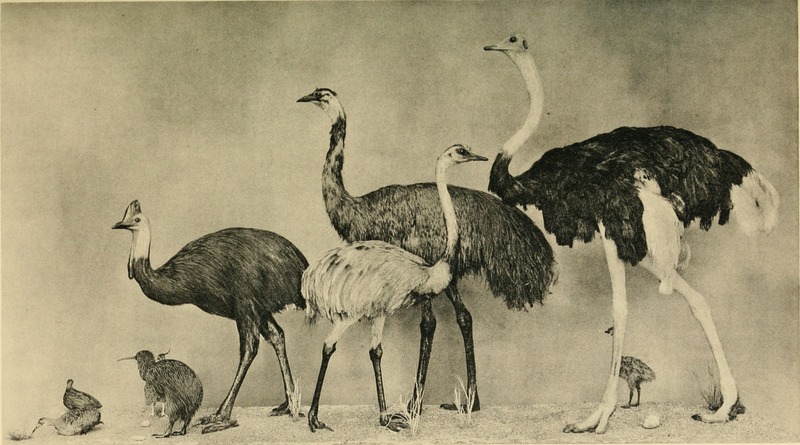|
| Query: bird | Result: 3369th of 32675 | |
common ostrich (Struthio camelus), common emu (Dromaius novaehollandiae), greater rhea (Rhea americana), southern cassowary (Casuarius casuarius), great spotted kiwi (Apteryx haastii)
| Subject: | common ostrich (Struthio camelus), common emu (Dromaius novaehollandiae), greater rhea (Rhea americana), southern cassowary (Casuarius casuarius), great spotted kiwi (Apteryx haastii)
| | Poster: | Wiki Photos (---@---.---)
| |

| Resolution: 2864x1592
File Size: 1042195 Bytes
Upload Date: 2017:03:26 12:56:25
|
OSTRICHES AND THEIR ALLIES
Title: Annual report of the Director to the Board of Trustees for the year ... https://archive.org/stream/annualreportofdi102fiel/#page/n98/mode/1up
Year: 1907-1943 (1900s)
Authors: Field Museum of Natural History
Subjects: Field Museum of Natural History; Natural history
Source: https://commons.wikimedia.org/wiki/File:Annual_report_of_the_Director_to_the_Board_of_Trustees_for_the_year_...%22_(1907-1943)_(19176247028).jpg
The ostrich or common ostrich (Struthio camelus) is either one or two species of large flightless birds native to Africa, the only living member(s) of the genus Struthio, which is in the ratite family. In 2014, the Somali ostrich (Struthio molybdophanes) was recognized as a distinct species.
The common emu or simply emu (Dromaius novaehollandiae), also known as great emu, is the second-largest living bird by height. It is endemic to Australia where it is the largest native bird and the only extant member of the genus Dromaius. The emu's range covers most of mainland Australia. Emus are soft-feathered, brown, flightless birds with long necks and legs.
The greater rhea (Rhea americana) is a flightless bird found in eastern South America. Other names for the greater rhea include the grey, common, or American rhea; ñandú (Guaraní); or ema (Portuguese). One of two species in the genus Rhea, in the family Rheidae, the greater rhea is endemic to Argentina, Bolivia, Brazil, Paraguay and Uruguay.
The southern cassowary (Casuarius casuarius) also known as double-wattled cassowary, Australian cassowary or two-wattled cassowary, is a large flightless black bird. It is a ratite and therefore related to emu, ostrich, and the Rhea and Kiwi genera.
The great spotted kiwi, great gray kiwi, or roroa (Apteryx haastii) is a species of kiwi endemic to the South Island of New Zealand. The great spotted kiwi, as a member of the ratites, is flightless. It is the largest of the kiwi. |
^o^
Animal Pictures Archive for smart phones
^o^
|
|